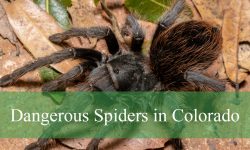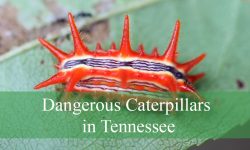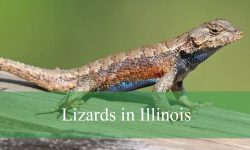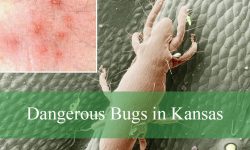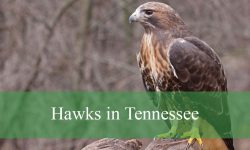Ohio’s countryside, forests, and farmland have seen a surprising rise in feral pig populations over the past few decades. These wild swine, often descendants of escaped domestic pigs or imported boars, have adapted remarkably well to the state’s varied landscapes.
Feral pigs in Ohio come in different shapes, colors, and sizes — from true Eurasian wild boars to domestic hybrids and razorback types. Each has unique traits that make identification both fascinating and important for wildlife management.
Whether you’re a hunter, a farmer, or simply a nature enthusiast, understanding the types of feral pigs found in Ohio can help you recognize their impact on ecosystems, agriculture, and native wildlife.
Different Types of Feral Pigs Found in Ohio
Domestic Feral Pigs (Sus scrofa domesticus)
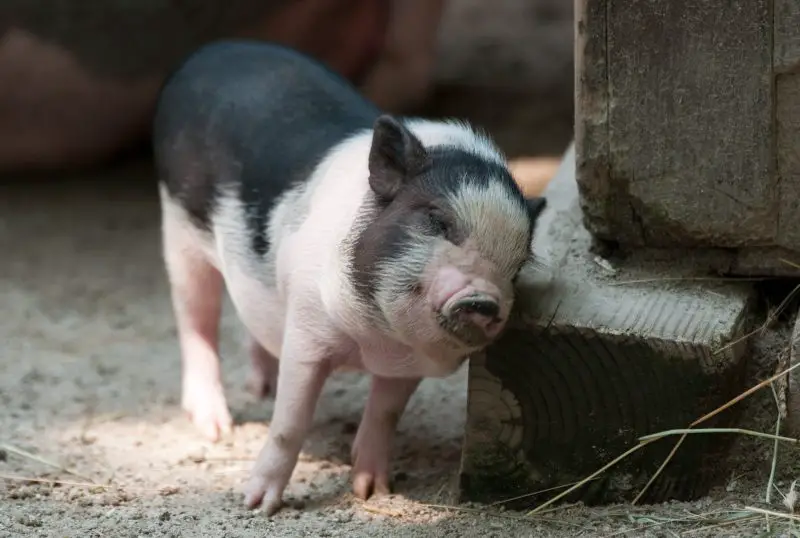
Domestic feral pigs in Ohio are descendants of escaped or released farm swine that have learned to survive without human care. Over several generations in the wild, they undergo striking physical changes that distinguish them from their domestic ancestors. Their bodies become leaner, with longer legs, more developed shoulders, and elongated snouts. Their hair thickens and coarsens, providing protection from cold and rough terrain. Coat colors vary widely—ranging from pink and white to spotted, brown, or even nearly black—depending on their genetic background.
In terms of identification, these pigs are generally smaller and less muscular than pure Eurasian or Russian boars, though mature males can still be quite large. Adult domestic feral pigs typically measure between 3 to 5 feet in length and stand 2 to 3 feet tall at the shoulder, with an average weight of 150 to 250 pounds. Boars often grow small but sharp tusks, which continue to develop with age and use. Their tracks resemble those of deer but are more rounded, and their rooting behavior often leaves large patches of overturned soil.
Behaviorally, domestic feral pigs are highly adaptable and opportunistic feeders. They are omnivorous, consuming roots, tubers, acorns, crops, insects, and occasionally small animals. They prefer to forage at dusk and dawn, often traveling in family groups called sounders—usually consisting of females and their young. Mature males are more solitary, except during the breeding season when they actively seek mates. Feral pigs are known for their intelligence, wariness, and ability to learn from human activity, which makes them difficult to hunt or trap.
Reproduction is a key reason why domestic feral pigs have spread across parts of Ohio. They can breed throughout the year, with peak activity in late winter and early spring. Females reach sexual maturity as early as six months old and can produce two litters annually, each containing four to ten piglets. This rapid reproductive rate, combined with high survival and adaptability, allows populations to expand quickly in favorable conditions, even in colder climates.
Domestic feral pigs in Ohio are primarily found in southern and southeastern counties, including Adams, Lawrence, Scioto, and Jackson, where forested hills and farmland provide both cover and food. They prefer mixed woodlands, brushy ravines, and wetland edges but also raid agricultural fields. Their presence poses ecological concerns, as their rooting disturbs soil and native plant communities, increases erosion, and competes with native wildlife for resources. Despite control efforts, domestic feral pig populations continue to persist and expand in Ohio’s rural landscapes.
Eurasian Wild Boar (Sus scrofa scrofa)
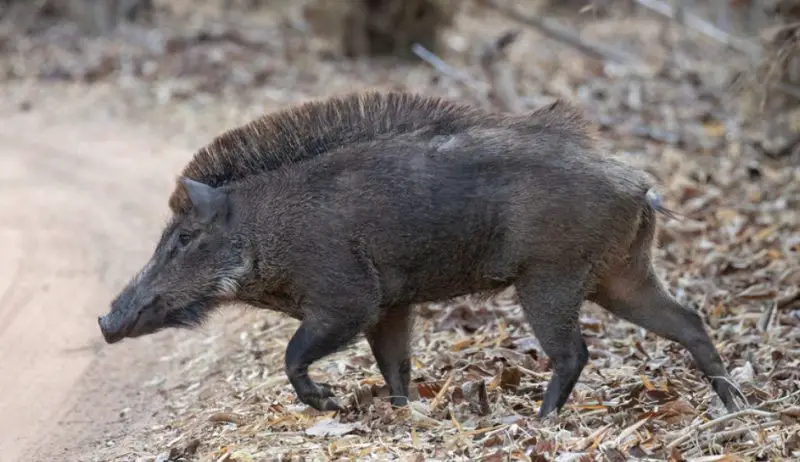
The Eurasian Wild Boar is the true wild ancestor of all domestic pig breeds and represents one of the most recognizable types of feral swine found in Ohio’s forests. These animals were originally imported from Europe and Asia for hunting preserves in the early 1900s, but some escaped or were released, forming small, free-ranging populations. They are powerfully built with muscular shoulders, a sloping back, and a coarse outer coat that protects them from cold winters and thick underbrush. Their coloration is typically dark brown, black, or grayish-black, often with lighter guard hairs giving a grizzled appearance.
Identification of the Eurasian wild boar is straightforward once you recognize its wild traits. Adults are usually 3.5 to 5.5 feet long, with shoulder heights of 2.5 to 3 feet, and weights ranging from 200 to 350 pounds for males. They have narrow wedge-shaped heads, small pointed ears, and long snouts well adapted for rooting. Their tails are straight and end with a tuft of hair. One of their most notable features is the presence of large, upward-curving tusks—particularly in males—that can grow several inches long and serve both for defense and foraging.
Behaviorally, the Eurasian wild boar is extremely cautious and mostly nocturnal. They avoid open areas during the day, preferring to feed under the cover of darkness. Their diet consists of roots, acorns, nuts, insects, small vertebrates, and even carrion. They use their powerful snouts to dig up soil in search of food, leaving behind deep, disturbed patches known as wallows and rooting pits. These animals are also known for their intelligence and memory, often altering their movements to avoid traps or hunters once they sense human activity nearby.
Reproductive habits of the Eurasian wild boar are highly efficient. Females typically reach sexual maturity at one year old and give birth to a single litter each year, although favorable conditions can increase frequency. Litters average four to six piglets, which are born with characteristic striped coats that help with camouflage. Piglets stay close to the mother in tightly bonded family groups called sounders, which provide protection and social learning opportunities. Boars, on the other hand, are solitary outside of breeding season and may travel large distances in search of receptive females.
In Ohio, Eurasian wild boars are primarily found in the southeastern counties, especially Hocking, Vinton, Jackson, and Gallia, where the combination of rugged hills, dense forests, and abundant food sources provides ideal habitat. They favor mature hardwood forests interspersed with clearings and water sources such as creeks or swamps. Their presence has raised ecological concerns due to their destructive foraging habits and competition with native species like white-tailed deer and wild turkeys. Despite ongoing management efforts, the adaptability and intelligence of the Eurasian wild boar make them a persistent challenge in Ohio’s wild landscapes.
Russian Boar (Sus scrofa attila)
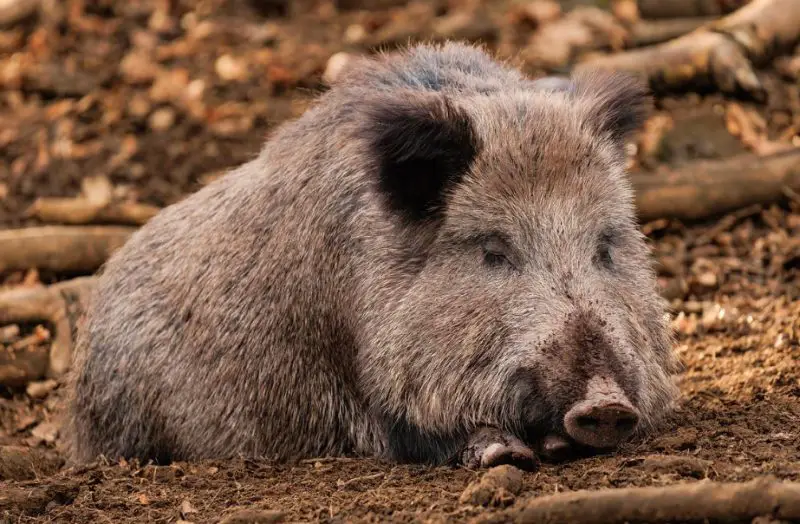
The Russian Boar, a formidable subspecies of the Eurasian wild boar, is one of the most powerful and intimidating types of feral pigs found in Ohio. Originally introduced to North America for trophy hunting during the early 20th century, some individuals escaped from private game preserves and established wild populations. Over time, they interbred with domestic pigs, creating hybrids that still retain many of the pure Russian boar’s traits. Their appearance is striking—large, muscular, and rugged, with thick bristly coats that help them withstand cold winters and dense vegetation. Most have dark gray to almost black fur, a coarse mane, and a prominent ridge of longer hair running down their spine.
Russian boars are significantly larger and stronger than most domestic feral pigs or Eurasian wild boars. Adult males can measure up to 6 feet in length and stand about 3 feet tall at the shoulder, with weights typically between 250 and 400 pounds, and occasionally exceeding 450 pounds in well-fed individuals. Their heads are long and wedge-shaped, with a sloped forehead and narrow snout designed for digging through soil and ice. Their tusks are longer and thicker than those of domestic types, curving upward and outward—used for both foraging and defense. Females are smaller but equally tough and well adapted for survival in harsh conditions.
In behavior, Russian boars are intelligent, wary, and aggressive when threatened. They are primarily nocturnal, emerging from dense cover after dusk to feed. Their omnivorous diet includes roots, acorns, tubers, fruits, small mammals, eggs, and carrion. They are also notorious for rooting up agricultural fields and damaging native plant communities in search of food. Wallowing in mud and shallow water helps regulate their temperature and protect their skin from insects. When startled or cornered, they can charge with surprising speed, making encounters with humans or pets potentially dangerous.
Reproductively, Russian boars follow similar patterns to other feral swine but tend to produce fewer, hardier offspring. Breeding can occur year-round, though it peaks in late winter. Females (sows) reach maturity at around one year of age and usually give birth to four to eight piglets after a gestation of about 115 days. The young are born striped for camouflage and stay with the sow for several months before becoming independent. With adequate food and shelter, populations can expand rapidly, which is a concern for wildlife managers in Ohio.
In Ohio, Russian boars and their hybrids are most often reported in southern and southeastern counties, especially near Hocking, Vinton, and Gallia, where remnants of old hunting preserves still exist. They prefer dense forests, hilly terrain, and areas near rivers or wetlands, which offer both cover and food sources. These powerful animals have adapted well to the state’s climate and terrain, but their rooting behavior, crop destruction, and competition with native wildlife have made them a serious ecological threat. Conservation agencies continue to monitor and control Russian boar populations to prevent further spread across Ohio’s landscape.
Hybrid Feral Hogs (Boar × Domestic Crosses)
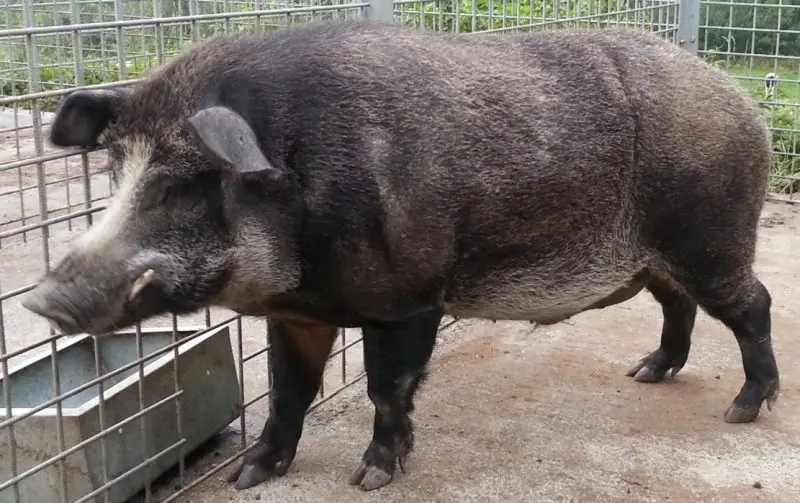
Hybrid feral hogs are the most widespread and adaptable type of wild pig currently found in Ohio. They are the result of interbreeding between Eurasian or Russian wild boars and domestic farm pigs, producing offspring that combine the toughness of wild swine with the reproductive vigor of domestic breeds. These hybrids display an incredible range of appearances, making identification challenging. Some resemble true wild boars with dark bristly coats and long snouts, while others have lighter coloring, spots, or body shapes closer to domestic pigs. Their adaptability to a wide variety of environments has allowed them to establish breeding populations across southern and southeastern Ohio.
Physically, hybrid feral hogs show a broad size range depending on genetic influence and food availability. Adults typically measure 3.5 to 5 feet in length and weigh between 150 and 350 pounds, though exceptionally large males can exceed 400 pounds. They often have muscular builds, coarse fur, and a slightly arched back. Tusks are common in both sexes but more pronounced in males, serving as defensive and foraging tools. The coloration varies from solid black or brown to reddish or mottled patterns, sometimes showing white or pink patches inherited from domestic ancestors.
Behaviorally, hybrids are intelligent, adaptable, and wary of human presence. They are omnivorous opportunists, feeding on roots, acorns, grains, small vertebrates, and even carrion. Their ability to exploit both agricultural and natural food sources allows them to thrive in farmlands, forests, and river valleys alike. They are mostly nocturnal, using their acute sense of smell to locate food, and often wallow in mud or shallow ponds to cool down and deter parasites. Their intelligence and caution make them difficult to hunt or trap, contributing to their continued population growth.
Reproductive success is one of the main reasons hybrid feral hogs have spread so rapidly in Ohio. They reach sexual maturity within six to eight months, and females (sows) can produce two litters per year, each with four to twelve piglets. The survival rate of piglets is high due to the protection of family groups called sounders, which usually consist of related females and their young. Males are mostly solitary, joining groups only during breeding periods. This reproductive capacity means that even small populations can quickly rebound after control efforts if a few individuals remain.
Hybrid feral hogs are found throughout southern, southeastern, and parts of central Ohio, particularly in Adams, Jackson, Scioto, Gallia, and Vinton Counties. They thrive in mixed habitats, including woodlands, farmlands, and wetland edges, where both cover and food are abundant. Their hybrid vigor makes them resilient to environmental stress, allowing them to survive cold winters and periods of food scarcity. However, their constant rooting and feeding damage crops, native vegetation, and soil stability, posing serious ecological and economic threats. Wildlife agencies continue to prioritize monitoring and eradication programs to manage the growing hybrid hog populations across the state.
“Razorback” Type Hogs
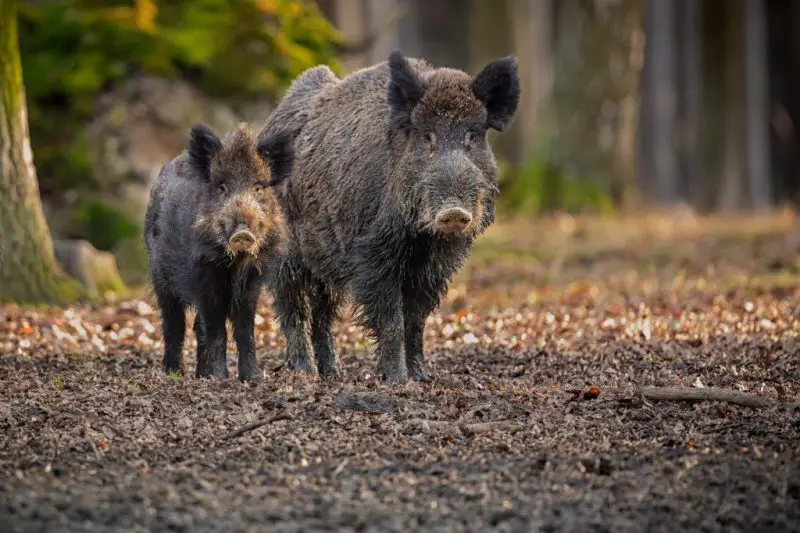
The term “razorback” refers to a distinctive type of feral pig recognized for its long, narrow body and prominent ridge of raised hair along the spine, which gives the appearance of a sharp “razor back.” In Ohio, most razorbacks are not pure wild boars but hybrids with a higher proportion of Eurasian or Russian boar genes. They are leaner and more muscular than domestic feral pigs, with tough hides and coarse bristly hair that ranges from dark brown to black. Their elongated snouts and narrow heads are perfectly adapted for rooting through dense soil and leaf litter. This combination of strength and agility makes them one of the most efficient and elusive feral pig types in the state.
Adult razorback-type hogs are medium to large in size, typically measuring 4 to 6 feet in length and standing 2.5 to 3 feet tall at the shoulder. Weights range between 180 and 350 pounds, though some mature males can exceed 400 pounds under favorable conditions. They possess a sloping back, long legs, and a powerful neck and shoulder region, features inherited from their wild boar lineage. Their tusks are well developed, curving upward from the lower jaw and used for both digging and defense. The coarse mane running down their back becomes especially pronounced when the animal is agitated or alarmed.
In terms of behavior, razorback-type hogs are known for their agility, aggression, and remarkable survival instincts. They are primarily nocturnal, foraging under the cover of darkness and retreating to thick vegetation or wooded ravines during the day. Their omnivorous diet includes acorns, roots, grasses, insects, small mammals, and agricultural crops. Razorbacks are highly territorial and can be dangerous if cornered, using their tusks and speed to defend themselves or their young. They are also strong swimmers and often wallow in muddy areas to cool down and protect their skin from parasites.
Razorbacks have a strong reproductive capacity similar to other feral pig types. Females reach sexual maturity within a year and can produce two litters annually, with four to ten piglets per litter. Piglets inherit a mix of traits from their hybrid ancestry, often showing striped coats at birth that fade as they mature. Family groups, or sounders, usually consist of related females and offspring, while adult males are solitary and roam widely in search of mates. Because of their adaptability, even a small population of razorbacks can expand rapidly in suitable habitats.
In Ohio, razorback-type hogs are most commonly found in the southern and southeastern regions, especially in Hocking, Lawrence, Scioto, and Vinton Counties, where rugged hills, dense forests, and river valleys offer ideal cover and food resources. They tend to favor remote, undisturbed environments such as hardwood forests, brushy ridges, and creek bottoms. Their strong wild traits make them harder to control than domestic feral pigs, and their rooting and wallowing behaviors cause extensive damage to native vegetation and soil. Wildlife officials regard razorback-type hogs as one of the most destructive and elusive forms of feral swine in Ohio’s natural ecosystems.
FAQs About Feral Pigs in Ohio
Are there wild pigs living in Ohio?
Yes. Wild pigs, also known as feral swine or wild boars, live in several parts of Ohio—mainly in the southern and southeastern regions such as Hocking, Vinton, Scioto, and Lawrence Counties. Most of these pigs are hybrids that originated from escaped domestic pigs and imported Eurasian or Russian boars. They have adapted well to Ohio’s forests and farmlands, forming small but persistent breeding populations.
What types of feral pigs are found in Ohio?
The main types include Domestic Feral Pigs, Eurasian Wild Boars, Russian Boars, Hybrid Feral Hogs, and Razorback-type Hogs. Each varies in size, color, and behavior, but all share common wild traits such as rooting habits, tusks, and the ability to survive in harsh conditions. The majority of Ohio’s wild pig population today consists of hybrids with mixed ancestry.
How can you identify a feral pig in the wild?
Feral pigs are typically stocky animals with coarse hair, long snouts, and short, curved tails. They may be black, brown, gray, or spotted, depending on their genetic mix. Adult males grow noticeable tusks that curve upward from the lower jaw. Their tracks are similar to deer prints but rounder, and their rooting often leaves large patches of overturned soil or damaged vegetation—clear signs of their presence.
Are feral pigs dangerous to humans or pets?
Yes. While feral pigs usually avoid humans, they can be aggressive if cornered or defending their young. They possess strong tusks capable of inflicting serious injuries and can charge with great speed. In addition to physical danger, feral pigs also spread diseases such as brucellosis and pseudorabies, which can affect both livestock and wildlife.
How fast do feral pigs reproduce?
Feral pigs are extremely prolific breeders. Females reach sexual maturity as early as six months and can produce two litters per year, each with four to twelve piglets. Because of this rapid reproductive rate, populations can grow quickly—even if only a few individuals remain after control efforts—making long-term management challenging.
What kind of habitat do feral pigs prefer in Ohio?
They thrive in mixed habitats that offer both cover and food, such as hardwood forests, brushy valleys, wetlands, and agricultural lands. They are especially common in southern Ohio’s hilly regions, where they can feed on crops, acorns, and roots while remaining hidden in dense vegetation. Access to water sources like creeks or swamps is essential for wallowing and cooling.
What damage do feral pigs cause?
Feral pigs cause severe ecological and agricultural damage. Their rooting and wallowing destroy native plants, increase soil erosion, and disrupt wildlife habitats. They also damage crops, pastures, and fences, leading to significant economic losses for farmers. Additionally, they compete with native species such as deer and turkey for food resources.
Can you hunt or remove feral pigs in Ohio?
Yes. In Ohio, feral swine are considered nuisance animals, and hunting them is permitted year-round with no bag limit. However, wildlife authorities encourage hunters to report sightings rather than pursue random shooting, as uncoordinated hunting can scatter sounders and make population control harder. The Ohio Department of Natural Resources (ODNR) and USDA Wildlife Services lead professional trapping and eradication programs.
Why are feral pigs a concern for Ohio’s ecosystem?
Feral pigs disrupt ecosystems by uprooting vegetation, degrading water quality, spreading invasive plant seeds, and competing with native animals. Their omnivorous diet also threatens ground-nesting birds, reptiles, and small mammals. In addition, their presence increases the risk of disease transmission to domestic livestock and wildlife, making them one of Ohio’s most destructive invasive species.
What should you do if you see a feral pig in Ohio?
If you spot a feral pig, do not approach or attempt to capture it. These animals can be aggressive and unpredictable. Instead, report the sighting to the Ohio Department of Natural Resources Division of Wildlife or USDA Wildlife Services. Providing location details, photos, or video evidence helps authorities monitor populations and take appropriate control measures.

